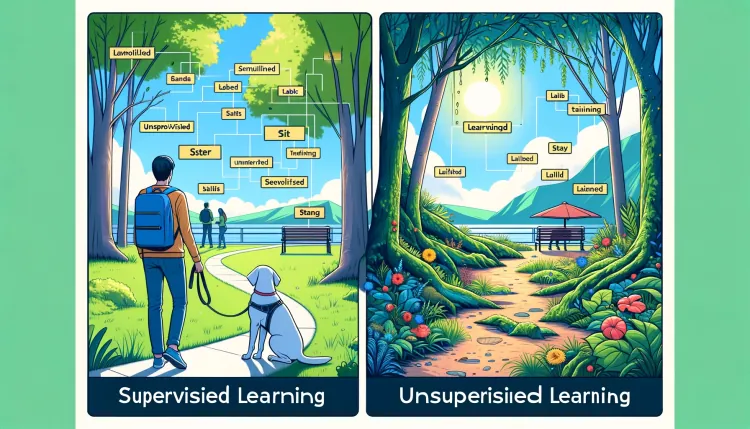Difference Between Supervised and Unsupervised Learning in AI
Understand the key differences between supervised and unsupervised learning in machine learning, including applications and processes

Supervised and unsupervised learning are two primary methods of machine learning, each with its distinct characteristics and applications. Understanding the difference between these methods can help in choosing the right approach for specific data science tasks. Here’s a breakdown of both:
Supervised Learning

Definition and Characteristics:
- Supervised learning involves training a model on a labeled dataset, which means that each input data point is paired with an output label. The model learns to predict the output from the input data during training by minimizing errors.
- Examples of supervised learning: Regression (predicting a continuous output), and classification (predicting discrete labels).
Process:
- Training phase: The model is trained on a pre-defined set of data examples, which have known responses. It learns the relationship between the features and the outputs.
- Testing phase: The model is tested on a separate dataset to evaluate its ability to generalize to new, unseen data.
Applications:
- Email spam filtering (spam or not spam)
- Medical imaging diagnosis
- Stock price prediction
Unsupervised Learning
Definition and Characteristics:
- Unsupervised learning involves training a model on data without any labels. The model tries to learn the underlying patterns and structure from the data without any explicit instructions about the outcome.
- Examples of unsupervised learning: Clustering (grouping similar instances together) and association (discovering rules that capture associations between items).
Process:
- Pattern detection: The algorithm tries to find patterns and relationships in the data by looking at intrinsic structures, such as groups, clusters, or commonalities.
- Model application: The patterns are used to make decisions about the data, like segmenting a market based on customer behavior.
Applications:
- Market segmentation (identifying distinct groups within customers)
- Anomaly detection (identifying rare events or errors)
- Organizing large databases into clusters
Key Differences
- Nature of data: Supervised learning requires labeled data, which can often be costly or time-consuming to obtain. Unsupervised learning uses unlabeled data, making it more flexible and widely applicable in situations where labeling data is impractical.
- Complexity and cost: Supervised learning generally requires a higher level of human effort and understanding to prepare the training set. Unsupervised learning can be more challenging to implement as the results are harder to evaluate without predefined labels.
- Outcome: The outcome of supervised learning is generally more predictable and understandable, as it maps to pre-known labels. Unsupervised learning outcomes can be less predictable as they depend on the structure discovered in the data.
Conclusion
Choosing between supervised and unsupervised learning typically depends on the data available and the specific problem being solved. Supervised learning is preferable when you have clear objectives and labeled data, while unsupervised learning is suitable for exploring data and discovering hidden patterns when the data lacks labels.
What's Your Reaction?






















